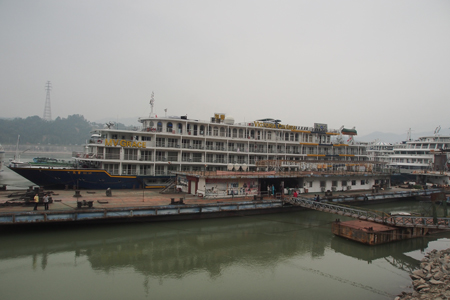
|
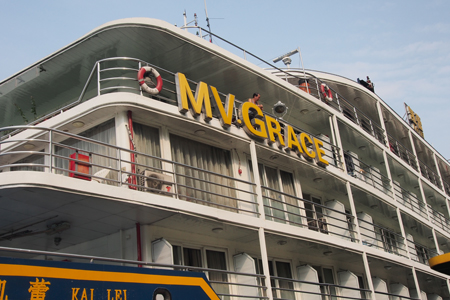
|

Yangtze River
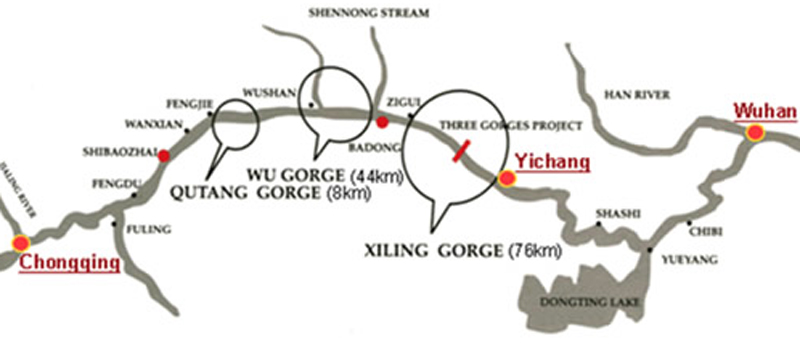
Area of the Three Gorges and the Dam
We cruised from Chongqing to Yichang and drove to Wuhan
|
We stayed on the boat this morning at Fengdu instead of taking a tour. We had the boat to ourselves! We sat on the observation deck, took pictures, and read. There was a pleasant breeze and some shade.
Our boat was tied up at Fengdu to a Chinese market with fruit venders, souvenirs, alcohol, and cigarettes. (The Chinese take a “no smoking” sign as a suggestion and light up wherever they please, including on our plane from Tibet! When was the last time that happened?) To get on and off our boat we had to walk on gangplanks attached to old army pontoons because the river is very shallow.
After the tour groups returned, we continued our cruise down the river.
|
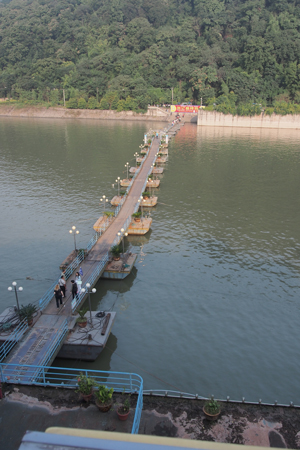
Gangplank at Fengdu
|
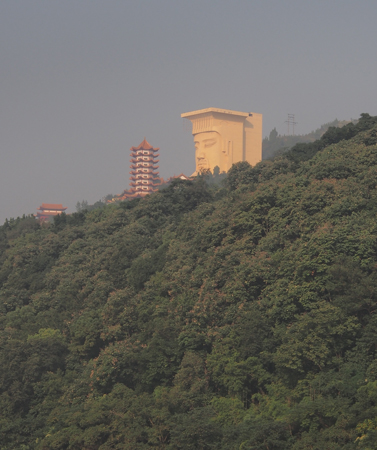
Facade of an unfinished hotel and a pagoda |
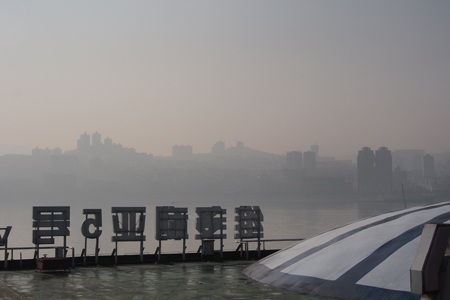
New county of Fengdu - relocated on the south bank of the river after construction of the Three Gorges Dam - note the pollution
|
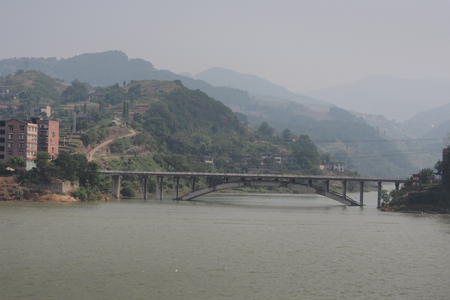
Partially submerged bridge |
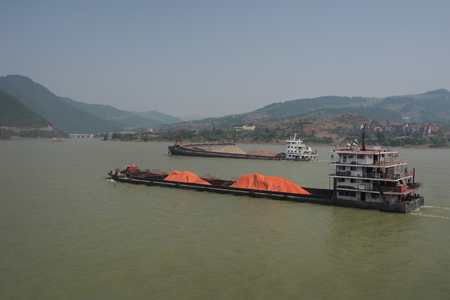
River traffic |
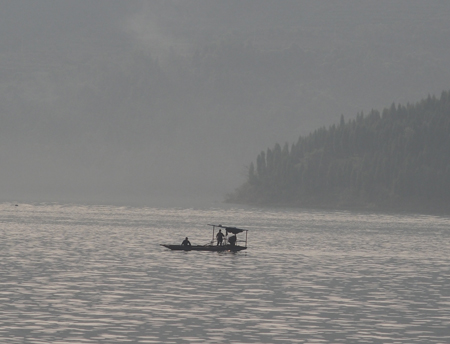
Typical Chinese fishing boat
|
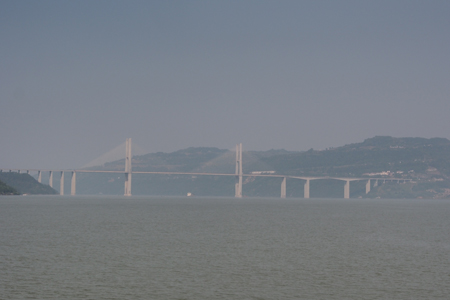
Cable-stayed bridge
|
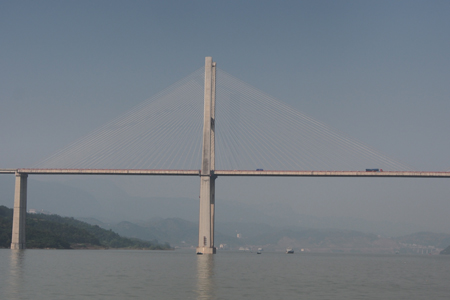
Close-up |
Late in the afternoon, we docked at Shibaozhai for another optional tour to see the Red Pagoda built against a rock cliff on an island. We chose to stay on the ship and had a great view of the pagoda from our balcony.
|
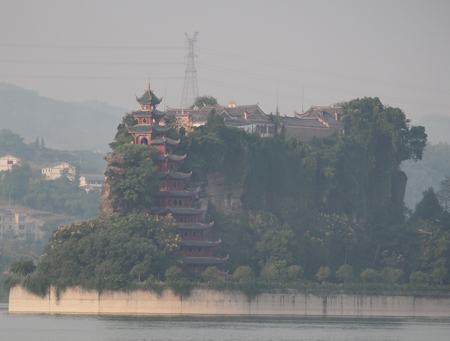
Red Pagoda
|
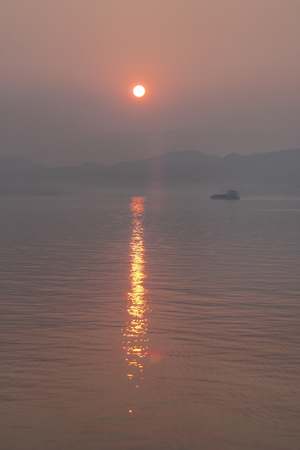
Sunset on the Yangtze River
|
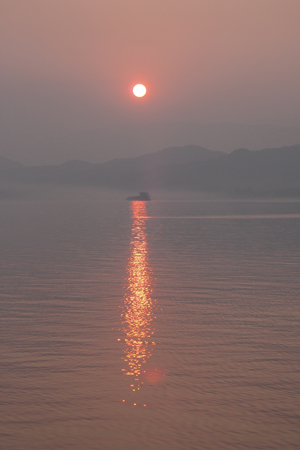
Sunset on the Yangtze River |
Sun., 10/12/14 – Yangtze River Cruise
This morning our tour was to the White Emperor City at Fengjie where we were docked. Most of the old town was submerged by the Three Gorges Dam and a new city was built higher on the mountain. The submerged buildings were blown up and left at the bottom. The White Emperor City became an island and a bridge was built to be able to access it.
We walked across the bridge, entered by a gate, and were just in time to watch a show with drums, flags, dancers, and the entry of the White Emperor. Then we walked around the complex, including up a lengthy flight of stairs, and looked down of the Devils’ Gate. The river here was very dangerous because of the strong eddies around a large rock in the middle of the river at the start of the Qutang Gorge. Chairman Mao had the rock blown up in the 1950’s making the river traffic safer. It is all submerged now because of the dam.
|
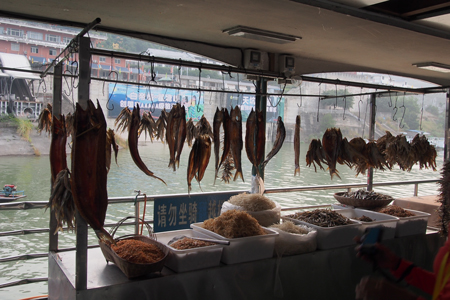
Fish market on the dock where we disembarked
|
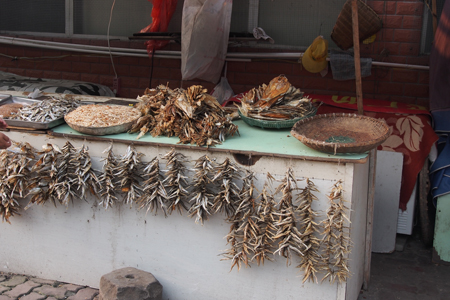
Fish market |
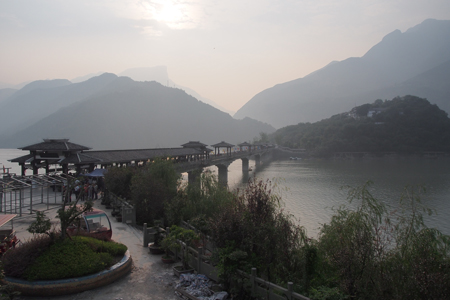
Bridge to the White Emperor's City |
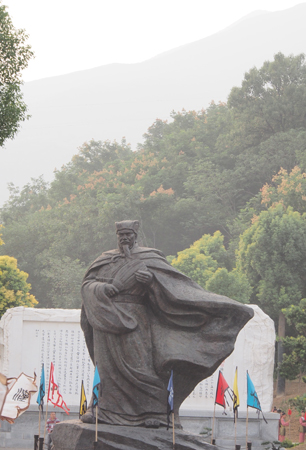
The White Emperor, one presumes
|
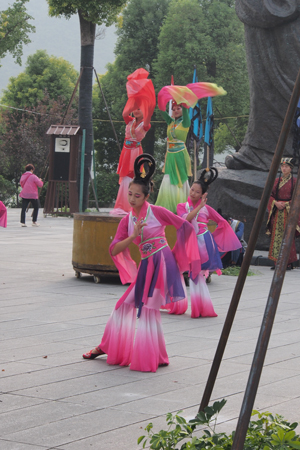
Celebrating the entry of the White Emperor
|
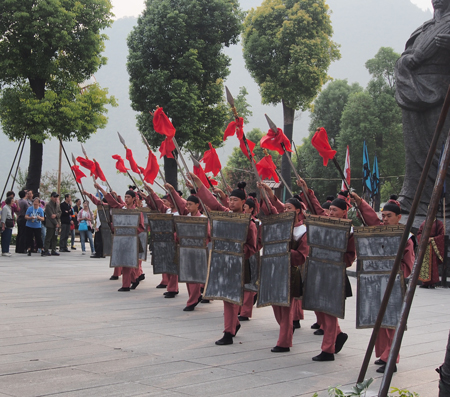
Celebrating the entry of the White Emperor |
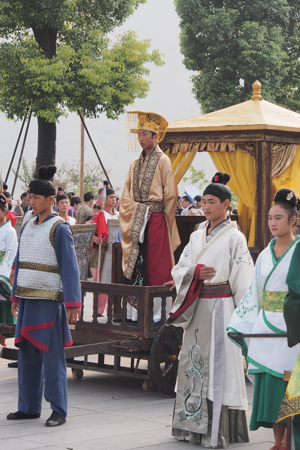
Celebrating the entry of the White Emperor
|
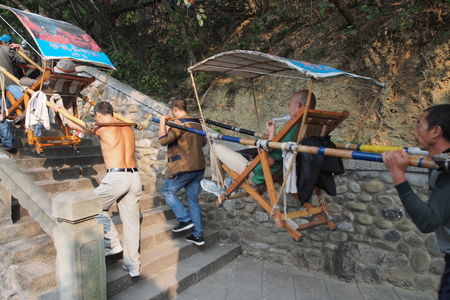
An option to walking up the steps |
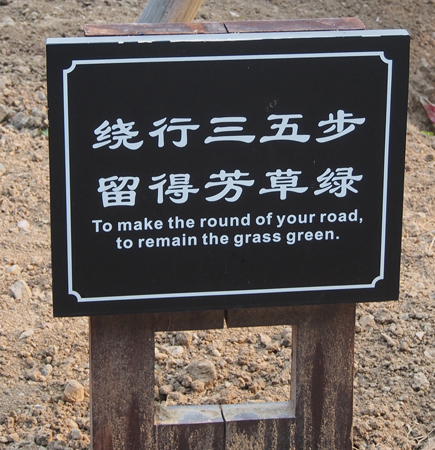
Another sign whose meaning is clear in spite of the English
|
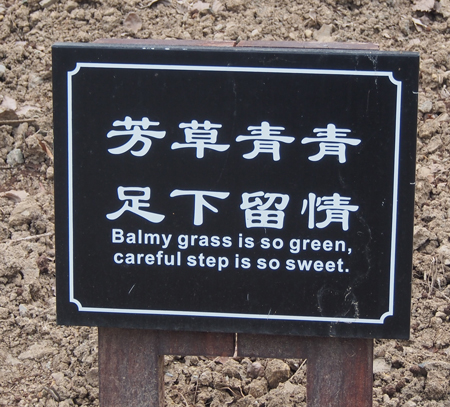
|
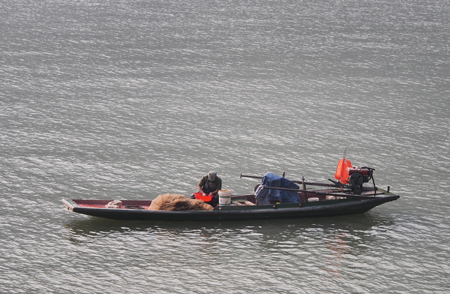
Fisherman on the river |
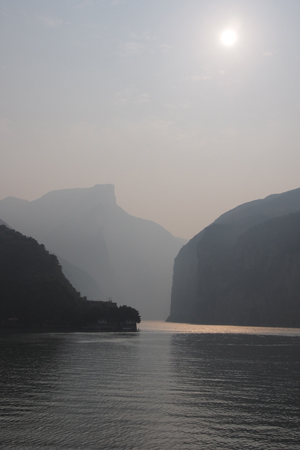
Devil's Gate
|
In the courtyard of the complex, we saw the statue of the mythical white dragon at the well and toured the buildings with statues of a general and a poet, scenes of the Battle of Yiling, a map of the area before the dam, a 900-year-old pagoda with a large bell that was damaged in the 2003 earthquake, and the “white house” with a picture of the city before the dam.
There was an exhibit explaining the “hanging coffins.” People during the Han Dynasty were buried and later their bones were dug up, placed in a coffin made from a tree trunk, and placed in caves in the high cliffs along the gorges. We later saw many of the caves. No one knows how people managed to reach the caves on the sheer cliffs.
|
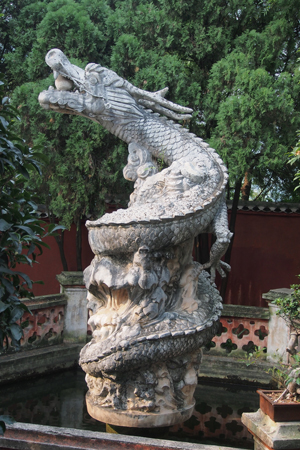
Mythical White Dragon at the well
|
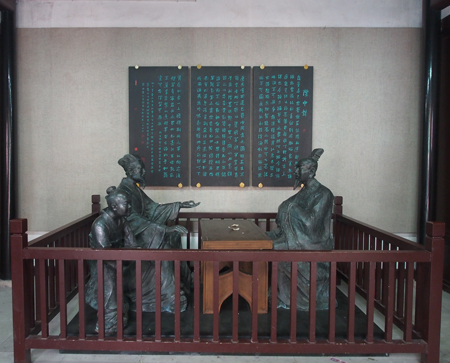
White Emperor's City |
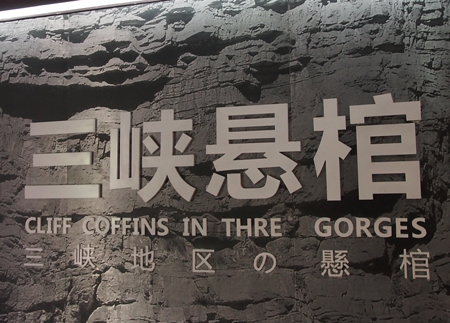
|
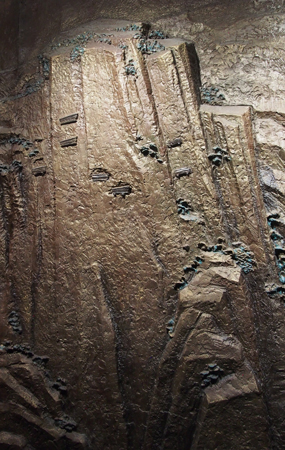
Model of coffin caves
|